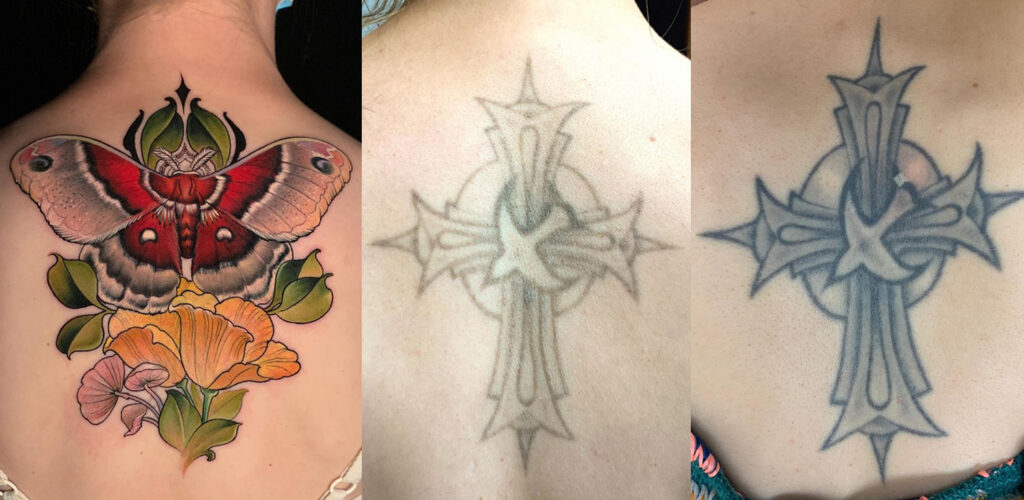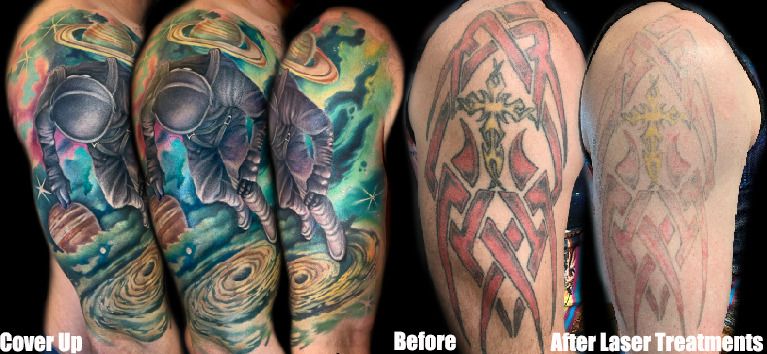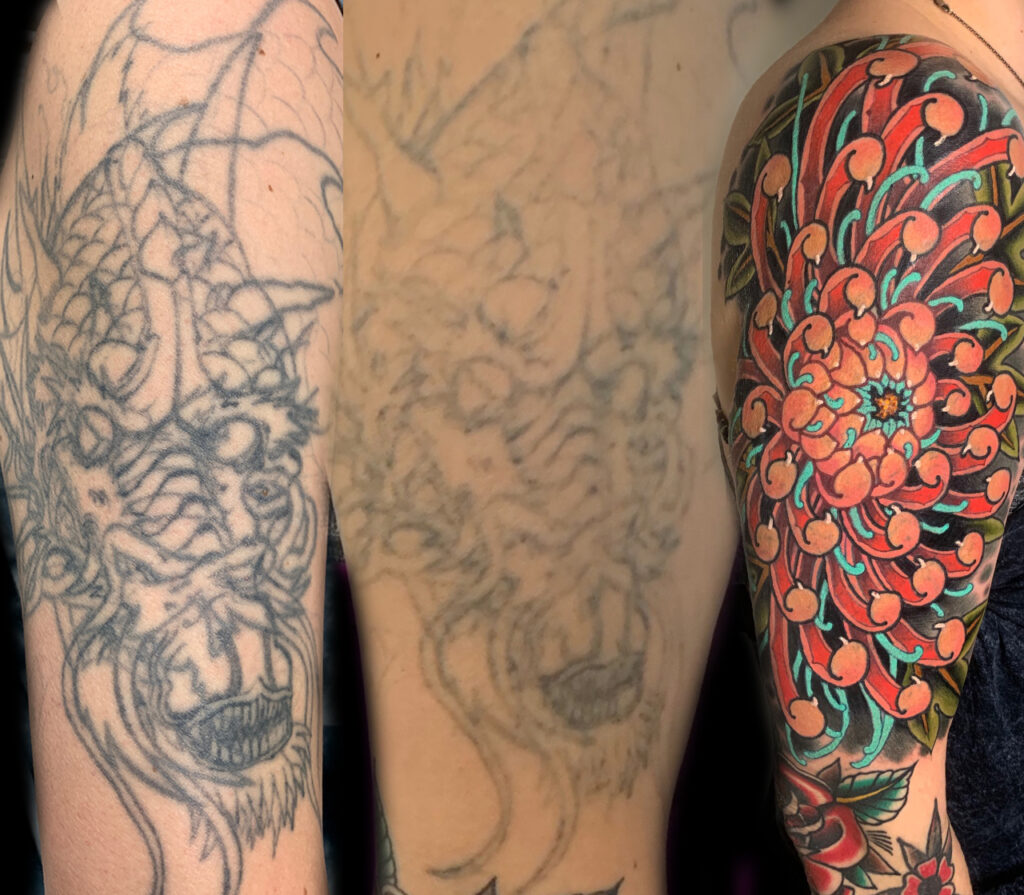
Tattoo coverups have become a popular thing over the years for those that may have an unwanted tattoo on their skin. This can come from age, poor execution, or simply a desire to have a better tattoo than the ones they currently have. Let’s face it, the tattoo industry has become quite the art form in the last 20 years and most artists these days have a very different outlook on what they want to tattoo. For those looking to cover up their tattoos, laser tattoo removal has become a popular and effective method.
How laser tattoo removal works
laser tattoo removal uses a high-intensity laser beam to break down the pigment in the tattoo ink. The laser breaks down the ink particles into tiny fragments, which are then absorbed by the body’s immune system and eliminated. The process requires several sessions spaced out over 4-6 weeks, depending on the size and complexity of the tattoo. When getting into the world of coverups the number of sessions largely depends on the tattoo, how it was done, as well as age. Age plays such a huge part in the world of tattoo removal and you can read more about that in my post “Tattoo Removal-Factors-You-Should Know.”
Why should you choose laser tattoo coverup?
While laser tattoo removal can be used to remove a tattoo completely, it’s a very effective option for those looking to cover up a tattoo with a new design. Cover-up tattoos can be more challenging to design and execute due to the existing ink. Most artists have 2 options.
1. coverup the existing tattoo with something organic (trees, water, mountains, etc.) in order to have creative freedom over the new tattoo’s “flow”.
2. Black out the design heavily in order to hide the ink as much as possible underneath.

While either of these options is ok to discuss with your artists the one thing most people don’t talk about is after time goes by and the new tattoos ink truly settles in the skin. Once the new ink settles, the previously tattooed ink is likely to show up underneath the new ink. This is often why we see people who are looking to laser off old coverup tattoos that just didn’t turn out how they wanted them.
Laser tattoo removal for cover-ups works by removing specific areas of the existing tattoo, creating a blank and or lightened canvas for the new design to be applied. The laser can remove most ink colors, making it easier to cover up with new designs or color schemes. This process allows for more freedom in design and can create a cleaner, more polished look for the cover-up.
The Process

It’s important to note that laser tattoo removal is not a quick or painless process. Patients may experience discomfort during and after the procedure, as well as potential side effects such as scarring, swelling, and redness. It’s essential to discuss these risks with a qualified professional before beginning treatment.
Choosing the right clinic or professional for laser tattoo removal is crucial to ensure safe and effective treatment. Look for experienced providers who use FDA-approved lasers and have a track record of successful results. Be wary of clinics offering quick and cheap treatments, as these may not provide the best outcomes and may lead to complications.
In conclusion, laser tattoo removal has become a popular and effective option for those looking to cover up or remove tattoos. With the ability to remove most ink colors, the process can create a blank canvas for new designs to be applied. It’s important to choose a qualified professional and discuss potential risks before beginning treatment. With the right approach, laser tattoo removal can help individuals achieve their desired tattoo goals and express themselves confidently.
